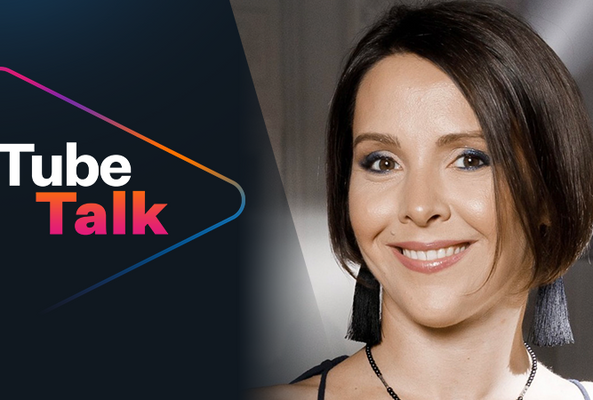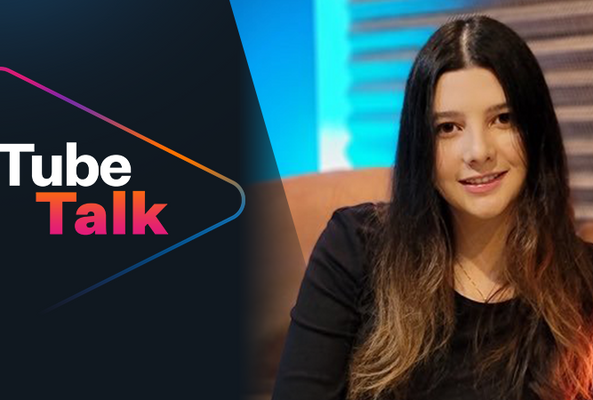Lydia Sweatt is a writer, bookworm, and bass guitar enthusiast. When she goes outside, a bicycle goes with her.
Podcasting on YouTube: 7 Tips to Get Subscribers on a Paid Membership
JUMP TO SECTION:
- 1. Know the Value of Your YouTube Podcast
- 2. Grow Your YouTube Podcast to 10,000 Subscribers
- 3. Know the Perks People Are Willing to Pay For
- 4. Put Full Podcast Episodes (the Video Version) Behind a Paywall
- 5. Advertise Your Premium Membership In Every YouTube Video
- 6. Create Experimental Content to See What Viewers Will Pay For
- 7. Don’t Overpromise
Do you have a podcast? Are you posting visual episodes on YouTube (but need more revenue to do so)?
If so, keep reading.
We’re going to share powerful tips to attract paying YouTube subscribers. These are viewers who pay a monthly subscription fee to get exclusive podcast content. They don’t have to spend much; five to $15 will suffice. But when they do pay, they get to unlock your entire content universe.
Read More: Make More Money on YouTube with Channel Memberships
In this episode of TubeTalk, we spoke with Saagar Enjeti and Jason Sew Hoy about building a premium membership as a podcaster. Saagar co-hosts the Breaking Points podcast, a political news show with more than 500,000 YouTube subscribers. Jason is the co-founder and CEO of Supercast, which helps podcasters sell premium subscriptions to their listeners.
Want to get paid subscribers for your YouTube podcast? Here are seven tips from Jason and Saagar to get you started.
1. Know the Value of Your YouTube Podcast
Before you build a paid membership for your podcast, know the value of your content. It should make a difference in people’s lives, whether you’re providing entertainment, information, or guidance. Maybe they love hearing co-hosts discuss politics calmly. Or perhaps they value comedy and storytelling. Try to figure out what keeps people watching your podcast channel.
Saagar suggests asking yourself three questions:
- Are you making people feel something?
- What about your show makes listeners feel special?
- Can you get those people to support you?
The fastest way to get these answers is by asking your subscribers. Then you’ll begin to understand the value of what you’re offering.
2. Grow Your YouTube Podcast to 10,000 Subscribers
This is the sweet spot for starting any kind of YouTube business. With 10,000 subscribers, you have more than just a strong following. A small percentage of your audience could be super fans. With just 1,000 super fans paying you $5 a month, you can easily earn $5,000. All it takes is 1% of a 10,000-subscriber audience.
Read More: Making Money on YouTube - 7 Tips to Start a Successful Business
That’s why you need to reach this milestone. It’s easier to build a membership program when you have the numbers to support one.
3. Know the Perks People Are Willing to Pay For
Typically, it costs nothing to listen to a podcast episode. Listeners aren’t paying when they watch the show visually on YouTube. And most aren’t paying to listen on Spotify, Apple, or Google.
That begs the question: How do you get paid subscribers for a podcast on YouTube?
First, know which perks people are willing to pay for. According to Saagar and Jason, that’s usually:
- Ad-free viewing or listening.
- Uncut versions of your content.
- Early access to your content.
- Extended versions of your content.
- Bonus episodes.
- “Ask me anything” live streams.
- Access to a private community group: Slack, Discord, Facebook, etc.
4. Put Full Podcast Episodes (the Video Version) Behind a Paywall
This tip reinforces the need for 10,000 or more subscribers.
When you’re just starting on YouTube, you can’t afford to put anything behind a paywall. You need to show everything related to your podcast; that includes short clips and full visual episodes.
But as your audience grows, you can monetize those visual, hour-long episodes.
“This has two benefits,” Saagar says. “At the end of the day, our real customers are our premium subscribers. So they get the full experience by watching a premium, uncut show, which is just more natural and pleasurable to watch. Second, in terms of editing, all I have going is a guy in the back, in the control room. The moment I say, ‘OK, now let's talk about [this],’ he just cuts it right there in Adobe Premiere. And so he’s actually dividing up the clips [for non-paying subscribers] while we’re going.”
Essentially, you want to upload clips of your podcast for free viewing on YouTube. Then you can slowly market a premium membership, where subscribers can watch full visual episodes.
5. Advertise Your Premium Membership In Every YouTube Video
When you’re posting podcast clips to YouTube, don’t forget to advertise your premium membership. Viewers have short attention spans; they aren’t going to look for something they can’t find easily, let alone pay for it.
“Like anything on the internet, the more seamless you can make a conversion path, the [easier it is] to discover something,” Jason says. “[They’ll say], ‘There’s such a thing as this premium [subscription]?'”
Always remember to:
- Talk about your premium subscription as you tape the podcast.
- Explain the benefits of becoming a member.
- Put the membership sign-up link in clickable YouTube info cards.
- Put the sign-up link in your video description.
- Create clickable end screens that go to the sign-up page.
6. Create Experimental Content to See What Viewers Will Pay For
Sometimes you have to experiment to see what people like. If you’re unsure of which perks to monetize for your podcast, just try something – anything. See if there’s a genuine interest among viewers.
“One of our organic experiments that showed us how valuable we are, is we wrote a book,” Saagar says. “That book hit the bestseller list, and we were like, ‘Holy crap.’ We only had 200,000 subs at the time. I thought it would sell a couple thousand copies or something like that.”
7. Don’t Overpromise
Lastly, be honest about the workload you can handle, and design your business accordingly. After all, there’s only so much time in a day. It’s better to expand slowly (and one service at a time) than introducing everything at once.



